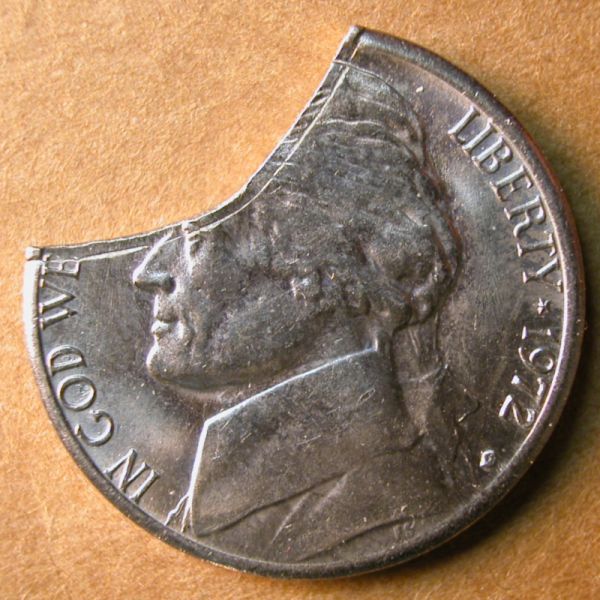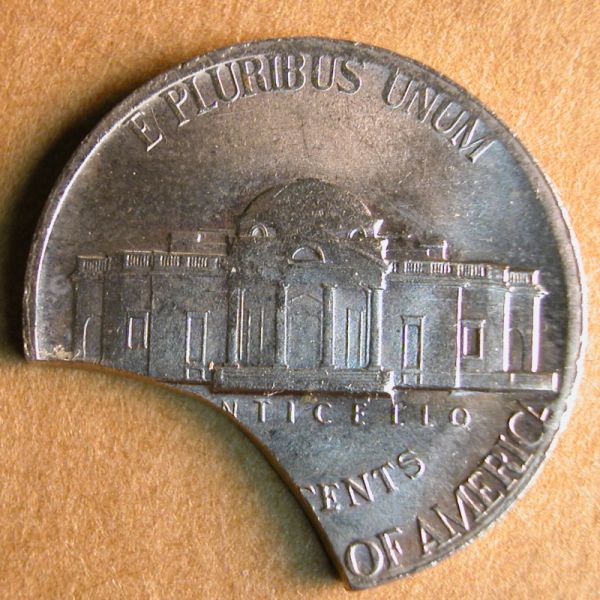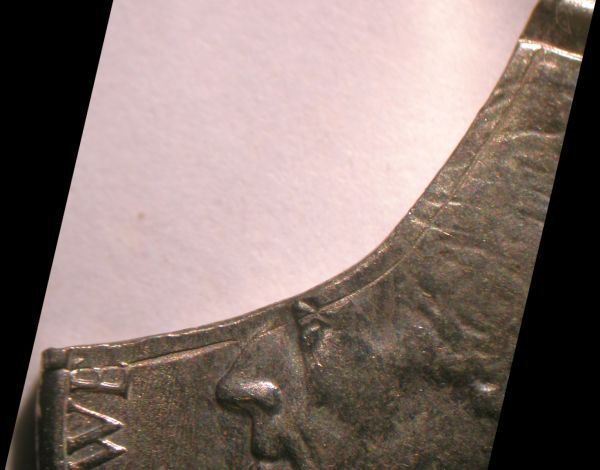Part V. Planchet Errors:
Blanking and Cutting Errors:
Curvilinear Blanking Burr
Definition: A struck-in blanking burr that parallels the internal margin of a curved (concave) clip. The one known example was discovered by Steve Mills on a 1972-D nickel. When the blanking punch sliced through the coin metal strip, it generated a burr that curled over onto the bottom surface of the strip. When the strip failed to advance properly and this area was sliced through again, it generated a blank with a curved clip and a blanking burr. This burr was eventually struck into the coin. A fissure marking the internal margin of the blanking burr is seen on the obverse face.
It’s not entirely clear why a burr formed on this clipped blank. Since it presumably formed on the bottom surface of the strip, this would require the blanking punch to have traveled all the way through the strip instead of stopping just short of the bottom, as is usually the case. The blanking punch may have been dull or the “button” (a removable sleeve that lines the hole in the perforated base plate} may have been dull. Perhaps both were dull. The burr might also represent a particularly coarse “tear zone” that projected inward from the hole to an unusual degree and was pushed ahead of the blanking punch.
Conventional blanking burrs (“rolling folds”) are burrs that project from the edge of a blank. A curvilinear blanking burr projects from the edge of the hole in the coin metal strip.
For more information go to this link:
http://www.coinworld.com/news/us-coins/2016/05/unique-errors-collectors-clearinghouse.html


